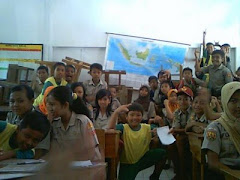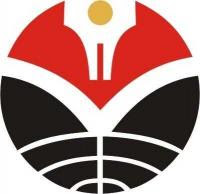Shōgakkō (小学校) are elementary schools in Japan.
More than 99% of Japanese elementary school-age children are enrolled in school. All children enter first grade at age six, and starting school is considered a very important event in a child's life.
Virtually all elementary education takes place in public schools; less than 1% of the schools are private. Private schools tended to be costly, although the rate of cost increases in tuition for these schools had slowed in the 1980s. Some private elementary schools are prestigious, and they serve as a first step to higher-level private schools with which they are affiliated, and thence to a university. Competition to enter some of these "ladder schools" is quite intense.
Although public elementary education is free, some school expenses are borne by parents, for example, school lunches and supplies. For many families, there are also nonschool educational expenses, for extra books, or private lessons, or juku. Such expenses rose throughout the 1980s, reaching an average of 184,000 Yen in FY 1987 for each child. Costs for private elementary schools are substantially higher.
Elementary school classes are large, about thirty-one students per class on average, but higher numbers are permitted. Students are usually organized into small work groups, which have both academic and disciplinary functions. Discipline also is maintained[citation needed], and a sense of responsibility encouraged, by the use of student monitors and by having the students assume responsibility for the physical appearance of their classroom and school.
Course of study
The ministry's Course of Study for Elementary Schools is composed of a wide variety of subjects, both academic and nonacademic, including moral education and "special activities." "Special activities" refer to scheduled weekly time given over to class affairs and to preparing for the school activities and ceremonies that are used to emphasize character development and the importance of group effort and cooperation. The curriculum includes Japanese language, social studies, arithmetic, and science. Nonacademic subjects taught include art (including Japanese calligraphy) and handicrafts, music, homemaking, physical education, and moral education. Japanese language is an emphasized subject. The complexity of the written language and the diversity of its spoken forms in educated speech (keigo)(敬語) require this early attention.
A new course of study was established in 1989, partly as a result of the education reform movement of the 1980s and partly because of ongoing curriculum review. Important changes scheduled were an increased number of hours devoted to Japanese language, the replacement of the social sciences course with a daily life course- -instruction for children on proper interaction with the society and environment around them—and an increased emphasis on moral education. New emphasis also was to be given in the curriculum to the national flag and the Japanese national anthem. The ministry suggested that the flag be flown and the national anthem sung at important school ceremonies. Because neither the flag nor the anthem had been legally designated as national symbols, and because of the nationalistic wartime associations the two had in the minds of some citizens, this suggestion was greeted with opposition. The English Language is taught at some schools especially in the higher grades; it is not yet mandatory at this level, but it is being planned for 5th & 6th grade from 2011,[1] as in 2002 TOEFL scores in Japan were the worst in Asia after North Korea.[2]
Equipment
There is a system of educational television and radio, and almost all elementary schools use programs prepared by the School Education Division of Japan's ex Broadcasting Corporation (Nippon Hoso Kyokai--NHK) (日本放送協会). In addition to broadcast media schools increasingly are equipped with computers. Although only 6.5% of public elementary schools had personal computers in 1986, by 1989 the number had passed 20%.
Lunch
Virtually all elementary schoolchildren receive a full lunch at school. Although subsidized by the government, the program is not altogether free. Full meals usually consist of bread (or increasingly, of rice), a main dish, and milk. Although the program grew out of concern in the immediate postwar period for adequate nutrition, the school lunch is also important as a teaching device. Because there are relatively few cafeterias in elementary schools, meals are taken in the classroom with the teacher, providing another informal opportunity for teaching nutrition and health and good eating habits and social behavior. Frequently, students also are responsible for serving the lunch and cleaning up.
Problems
Japanese elementary schooling is seen[who?] as effective, but not without some problems, notably increasing absenteeism and school refusal and troublesome number of cases of bullying (ijime) (いじめ). In addition, special provision for the young children returning to Japan from long periods spent overseas is an issue. The government also is concerned with the education of Japanese children residing abroad, and it sends teachers overseas to teach in Japanese schools.
Sources:Wikipedia











